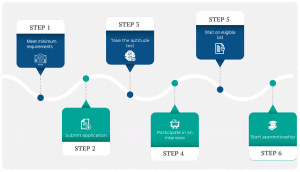The Watson Glaser Critical Thinking Appraisal Test (WGCTA) assesses your critical thinking skills. Your potential employer will be able to evaluate your ability to recognize assumptions, evaluate arguments, and draw conclusions based on the given information, so your best approach is to familiarize yourself with the test’s format and challenges and practice as much as you can.
Did you know?
The Watson Glaser Test is divided into five sections: (1) inferences, (2) recognition of assumptions, (3) deduction, (4) interpretation, and (5) evaluation of arguments. While every company treats scores differently, a 75% score will give you the best chance to be hired by a top law firm. Candidates who do well are those who are able to think critically and move through the different test sections quickly.
The newest version of the Watson Glaser test—Watson Glaser III—is a timed test. You will have to complete 40 questions in 30 minutes. Along with sample questions, which are introduced before each part of the test, the administration time may extend to 40 minutes. Watson Glaser is divided into 5 sections—inferences, recognition of assumptions, deductions, interpretations, and evaluation of arguments.
Watson Glaser test is a critical thinking test and to pass the test, you need to have strong problem solving and analytical skills, and you should be able to find a quick solution after examining all aspects of a problem. These aspects can be improved by simulating accurate Watson Glaser practice tests, more so if these are followed by detailed solutions and solving methods, like the practice tests offered by iPrep.
Watson Glaser Question Types Explained
There are 40 questions on the Watson Glaser Critical Thinking Appraisal Test (WGCTA).
The test is divided into 5 sections, each assessing a different aspect of critical thinking. The sections are presented on the test in this order:
| Name of the section | What does it measure? | How many questions? |
|---|---|---|
| 1. Inference | Rates the probability of the truth of inferences based on the information given. | 5-6 questions |
| 2. Recognition of Assumptions | Identifies unstated assumptions underlying given statements. | 12 questions |
| 3. Deduction | Determines whether conclusions follow logically from given information. | 5-6 questions |
| 4. Interpretation | Decides if generalizations or conclusions based on data follow beyond a reasonable doubt. | 5-6 questions |
| 5. Evaluation of Arguments | Evaluates the strength and relevance of arguments with respect to a particular question or issue. | 12 questions |
All questions are multiple-choice (five choices in inference and two choices in all the rest of the questions).
Between each section, you will have a short break in which the type of questions of the next questions is introduced. Do not count on resting as each of these introductions takes 2-3 minutes at most.
The five distinct types of questions on the Watson Glaser test are introduced in sections in the same order as the sections below. Read more about each of them and try a sample question. iPrep’s Watson Glaser practice tests cover these questions and these questions only, focusing you on the format that you will encounter on test day.
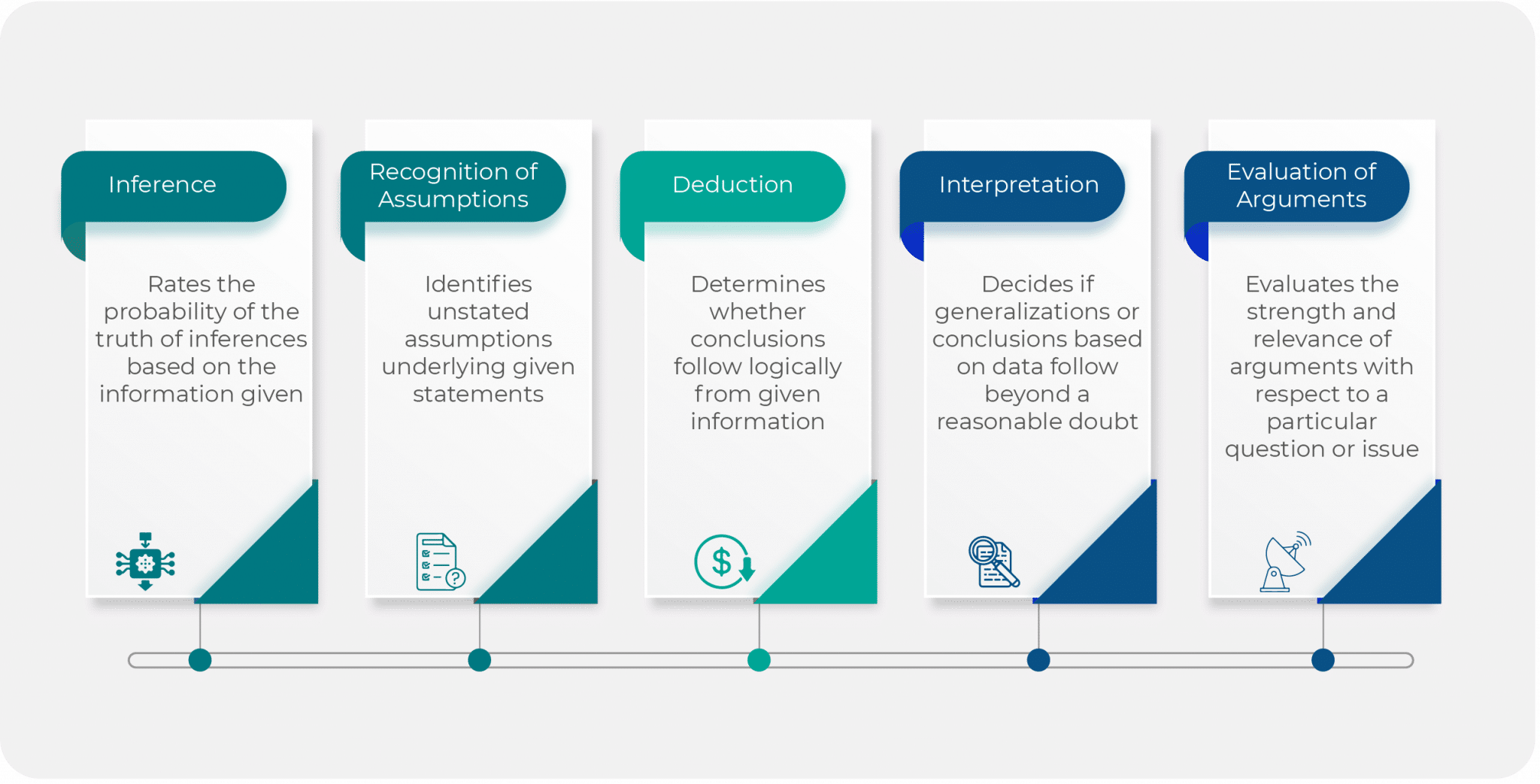
Inference
In these questions, you are given a short passage containing textual and sometimes statistical information. Two or three inferences are offered for each passage. Your task is to rate the probability of the truth of inferences based on the information given. You should not assume anything else besides the given information. There are five options to choose from:
- True – the inference is definitely true and can be completely drawn based on the passage. This is equivalent to an answer such as: “After examining this information, what you’re saying must be true!”
- Probably True – the inference is in line with the information presented, but there is not enough evidence for you to be completely sure that it is true. This is equivalent to an answer such as: “I see what you are trying to prove, and it makes sense; yet, you cannot be sure about it.”
- Insufficient Data – The information in the passage provides no evidence to either support or undermine the inference. This is equivalent to the answer: “Based on what you have told me, I have no idea if it is true or false.”
- Probably False – the inference deviates from the information provided and interprets it in a way that seems unlikely. Yet, there is a slim chance that it is true after all. This is equivalent to an answer such as: “What you are saying seems so far-fetched based on the evidence we have. It is really unlikely that it is correct.”
- False – the inference is definitely false as the information in the passage directly contradicts it. This is equivalent to answering: “The data says one thing and you say exactly the opposite! This cannot be true!”
A Winning Inference Tip:
Though there are five possible options, you should not expect that each of the inferences will fall under one of the five options. You can definitely expect that one or two answers will appear more than once. Therefore, consider each inference anew and do not rely on previous answers you have given.
Try an Inference Sample Question
A worldwide study shows that there are behavioral shifts among consumers. 41% said that they are “increasingly looking for ways to save money.” Consumers are largely brand loyal but shop around for the best prices. Only 12% of consumers have traded down to buy cheaper brands (such as bottled water), with 11% trading up (with products such as cosmetics). There has been a big shift towards online shopping.
None of those who trade down also trade up.
- True
- Probably True
- Insufficient Data
- Probably False
- False
The correct answer is Insufficient Data.
We cannot tell from the evidence of those who trade down (12% of consumers) and those who trade up (11% of consumers), what relationship there is between the two in terms of whether there is any overlap between the two groups. Though it might seem highly unlikely that there would be an overlap, the statements allow for this with the reference to the different products (bottled water, cosmetics). Even if the word “none” had been replaced by “few” or “many,” we would still have insufficient data to draw the inference.
Recognition of Assumptions
In these questions, a quote or a short statement is presented. In most cases, even if the assumption is not explicitly stated, the speaker or provider of the information must have a couple of things he or she takes for granted or considers as necessarily true to justify the statement. Your goal is to judge whether the suggested assumption is made by the author or not. There are only two options to choose from:
- Assumption Made – the author clearly assumed the suggested assumption because, without the assumption, the statement does not make sense.
- Assumption Not Made – the author does not have to assume a proposed assumption as it either undermines the statement or is irrelevant for the justification of the statement.
A Winning Recognition of Assumptions Tip:
To assess whether an assumption is necessary and important, try for a moment to assume the complete opposite. A contradictory/negative assumption may shed light on the necessity of the original assumption. A more in-depth view of this “negative assumption” solving method is included within iPrep’s guide.
Try a Recognition of Assumptions Sample Question
Statement: “Getting a highly paid position in a top law firm is difficult, so young lawyers need to get lots of experience in the law.”
Proposed Assumption: Getting a highly paid position in a top law firm is possible.
- Assumption made
- Assumption not made
This assumption is made.
Though the statement indicates that it “is difficult” to get “a highly paid position in a top law firm,” it must be possible to do this, otherwise, the “so” part of the statement could not be given.
Check this answer, using the negative test.
Getting a highly paid position in a top law firm is not possible.
Since this does not fit with the statement (even going as far as challenging the claim that getting this type of position is “difficult”), the assumption must be made.
Deduction
In these questions, you must apply pure logic to conclude whether a proposed conclusion is definitely true based on the provided evidence/premises, or not. The evidence must be considered as utter truth, even if it is debatable in the real world. There are only two options to answer the question:
- Conclusion Follows – the conclusion definitely follows from the evidence/premises. If the premises are true, then the conclusion must be true.
- Conclusion Does Not Follow – this answer should be chosen in any other case: if the evidence contradicts, does not support, or even leaves a shred of a doubt regarding the correctness of the conclusion, choose this answer.
A Winning Deduction Tip:
Remember that the premises must be considered complete truth. In addition, remember that you cannot generalize the premises or extend their claim to areas that encompass more cases than those the premises refer to. For example, if a premise refers to accountancy firms, banks, and investment companies, you cannot generalize it to “financial institutions.”
Try a Deduction Sample Question
Some producers of renewable energy rely heavily on government subsidies. All companies that rely heavily on government subsidies will one day have to manage without them. Therefore…
Some producers of renewable energy will one day need to operate without government subsidies.
- Conclusion follows
- Conclusion does not follow
This conclusion follows the premises.
If we look at the structure of the premises in a simplified form, we get “Some A are B. All B are C.”
This diagram represents a plausible organization of groups A, B, and C:
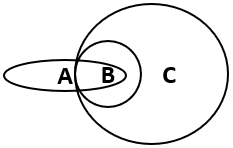
So, it must follow that some A are C.
Interpretation
In these questions, like the deduction questions, you also need to decide whether a proposed conclusion follows or not. This time, though, the standard is not “definite truth” as it is in the deduction section, but “beyond reasonable doubt.” This criterion is a strong one but it is weaker than the one used in deduction. To arrive at your conclusion, you must only consider the information provided in the passage, which for the purpose of the test is considered as true. To summarize, you must choose between two options:
- Conclusion Follows – the conclusion follows from the evidence/premises beyond a reasonable doubt, which means that it is very unlikely that it will not be true, eventually. You may be able to describe a situation in which the conclusion does not follow, but this scenario is rather unusual.
- Conclusion Does Not Follow – this answer should be chosen if the information clearly contradicts the conclusion; if there is no sufficient information to prove or undermine the conclusion; and even if there is a much greater chance that the conclusion follows but there is still a reasonable scenario in which the conclusion doesn’t follow.
A Winning Interpretation Tip:
Each passage is followed by two or three proposed conclusions. These conclusions may seem related to one another. However, when you make a decision as to whether a conclusion follows or not, you should only take into account the information presented in the passage and not any conclusions that were presented before the conclusion you currently examine. Do not let your decisions regarding previous conclusions mislead you.
Try an Interpretation Sample Question
It is predicted that, by 2055, half of today’s work activities could be automated. The activities most susceptible to automation are physical ones in highly structured and predictable environments and those involved in the collection and processing of data. In advanced economies, such activities make up 51% of all economic activities.
Half of today’s jobs will disappear by 2055.
- Conclusion follows
- Conclusion does not follow
This conclusion does not follow beyond a reasonable doubt from the premises.
The prediction given in the evidence is that “by 2055, half of today’s work activities could be automated.” This is not necessarily equivalent to half of today’s jobs disappearing since jobs could change to fit with the change in “work activities.”
Evaluation of Arguments
In these questions, you are presented with a business or social dilemma: “Should Measure X be taken?” Usually, two arguments follow each dilemma. Each argument may either advocate in favor or against the proposed action. Either way, your goal is not to justify the arguments but to analyze them and decide whether the argument is weak or strong:
- Argument Strong – for an argument to be strong, it must be both important and directly related to the question. An important argument provides social/moral/financial justification for the action. A directly related argument deals precisely with the subject and the main issue at stake. It does not over-generalize it or deal with a secondary issue.
- Argument Weak – an argument is weak if it is of minor importance or if it is related only to trivial aspects of the question. It is weak even if it is of general great importance but not directly related to the question.
A Winning Evaluation of Arguments Tip:
You must remember that your personal agreement with the argument is irrelevant in this case. As in many fields, such as state politics and social welfare, there might be strong arguments in favor or against almost any proposal. You may think of a proposal as the most ethical and reasonable solution, or condemn it wholeheartedly. On the test, however, you must disregard your emotions and perceptions and refer only to the criteria for strong and weak arguments.
Try an Evaluation of Arguments Sample Question
Should tariffs on foreign goods be used as a way of protecting domestic jobs?
No; some domestic jobs are created as a result of importing foreign goods.
- Argument strong
- Argument weak
This argument is strong.
This provides both a relevant and important challenge to the question. If the focus is on the protection of domestic jobs, then risking the reduction of foreign imports through tariffs (by consequent price-increases) could reduce the number of jobs in some domestic industries.
Watson Glaser Preparation Strategies
There are many general tips on how to prepare for a test. The following preparation strategies, however, are customized for the Watson Glaser test. Follow them, and ensure yourself a better chance of passing the test.
Forget What You Know About Logic – Learn Watson-Glaser’s Logic
Many people who are getting ready to take the Watson-Glaser test have learned about logic and critical thinking at some time in their life. Paradoxically, this might be a threat. The Watson Glaser test is criticized by many critical thinking professors for not being in line with common logic practices. This should not interest you one bit.
In order to do well on the Watson Glaser test, you should only stick to its logic. To do that, study the specific test format and test concepts very well. Also, use a guide that is dedicated to the Watson Glaser test. General critical thinking guides or guides that claim that they cover all the critical thinking tests, including the Watson Glaser test, will not help you do well. Such guides are likely to teach you concepts that you do not need or even concepts that contradict Watson-Glaser’s logic.
Finally, take Watson Glaser practice tests and learn from their solutions. Do not settle for general critical thinking practice tests.

Get Used to Relying Only On The Provided Information
It is very difficult not to rely on your previous knowledge. The new versions of the Watson Glaser test also deal with contemporary issues about which you are already familiar and about which you may have strong opinions. You must put all that aside.
As part of its attitude towards assessing critical thinking, the WGCTA states that all the information that is provided as preliminary information for the questions (arguments, statements, premises, statistics) must be considered as utter truth. Even if you are certain there are inaccuracies in it. This information is the only source from which you must glean your judgments before choosing the correct answer—not what you learned on the internet, not what your parents taught you, and not even what your moral compass is telling you.
This is an intentional feature of the test, as the creators believe that it better assesses the person’s ability to be detached from biases and emotions while making a decision. As a crucial aspect of the test, many people lose points because they provide “external” justifications to their choices. Don’t fall into that trap!
Learn The Differences Between The Three Types Of Conclusions On The Watson Glaser Test
In three types of questions—inference, deduction, and interpretation—you may want to mark a conclusion/inference as “follows/true.” The conditions for the conclusion to follow (or not to follow) in each of these three are somewhat different. To be well-prepared for the test, you must fully understand the differences between the categories and establish three sets of reasoning that you can apply on demand. The question-type descriptions on this page provide some insight into this, and the guides and practice questions of the course explain it well.

Practice Timed Simulations
The Watson Glaser is now a timed test, unlike most of the other critical thinking tests and the practice tests which are available online. This is a very significant step taken by the test publisher as time pressure adds to the test’s difficulty, and it poses a challenge to those who are less confident taking tests under time constraints. Overall, the time constraint (40 questions in 30 minutes) is not considered severe but it adds to the general stress level and may result in careless mistakes.
This is why it is important to practice using Watson Glaser tests that are timed. Familiarizing yourself with the time pressure will reduce its adverse impact while you take the actual test. You may even gain a few time-saving tips along the way.
Develop Your Specialized Toolbox of Solving Techniques
The Watson Glaser test doesn’t only assess your general ability to disseminate information. It may also include bits of information that are meant to confuse you and make you choose incorrect answers.
However, to avoid such mistakes, there are plenty of solving techniques that can be used to solve each of the types of Watson Glaser questions. If you choose courses that are aware of these solving techniques, and share them with you, you will find that they are invaluable in helping you earn points and save time.
The iPrep preparation course introduces such techniques to help you wisely solve each type of question. For example, it teaches you how to evaluate an assumption from contradictory perspectives to understand if it is necessary or not. It also teaches you logic that will help you manipulate the premises in the deduction questions in a way that will make it easier to evaluate the conclusions.
Even if you do not have access to a preparation guide for the Watson Glaser test, try to create your own toolbox of solving methods and repeatedly apply them to make them more intuitive for you.
Test Features
Fast Facts (tl;dr)
- Total of 40 questions.
- The test has a 30-minute time limit.
- Question types: inferences, recognition of assumptions, deductions, interpretations, and evaluation of arguments.
- Three types of questions are evaluated on a single “drawing conclusions” scale—inference, deduction, and interpretation.
Watson Glaser III was introduced in the US in 2018, and a short time later, it started to be administered in the UK. The newest version of the Watson Glaser Critical Thinking Test introduces some old and some new features.
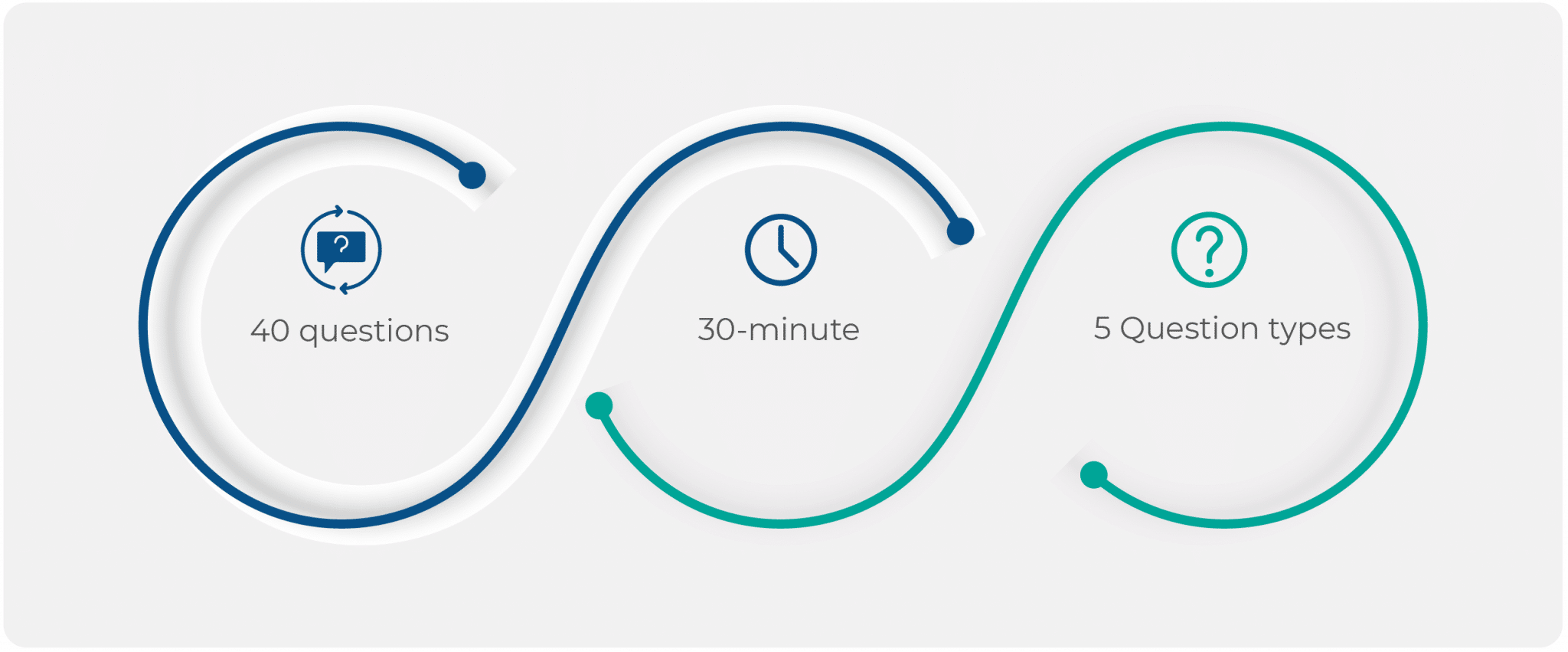
Three Scoring Scales – The RED Model
Since the introduction of Watson Glaser II, the results of the test have been reported according to a three-scale model—the RED Model of critical thinking:
- Recognition of Assumptions – this scale is based solely on the second section of the test, which has the same name. It reports how sensitive you are to assumptions and presuppositions in the information. If you do it well, it means that you are likely to reveal information gaps or unfounded logic.
- Evaluating Arguments – this scale is based solely on the fifth section of the test, which also has the same name. If you do it well, you are skilled in analyzing information objectively and accurately. This means that you won’t let emotions and biases obscure your judgment.
- Drawing Conclusions – this scale is based on three types of questions, which all deal with the art of drawing conclusions from information—inference, deduction, and interpretation. It is a prominent scale, which is based on 16 questions rather than 12 questions in the first two scales. If you do it well, it means that you have a good sense of judgment and that you will know how to weigh data and information and arrive at solid conclusions that do not overgeneralize or misread the information.
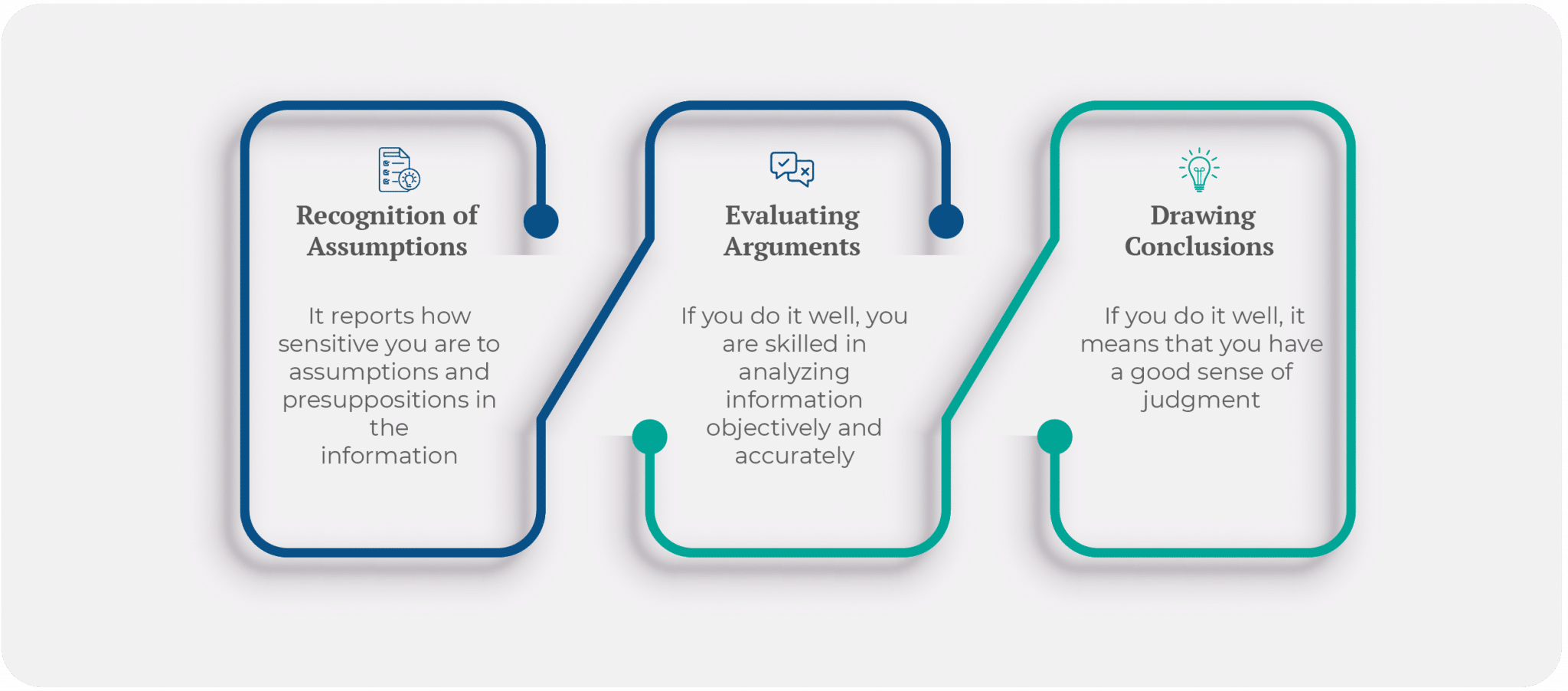
Watson Glaser – Now a Timed Test
Watson Glaser II is proctored and untimed. It is recommended to complete it within 30-40 minutes, though, because your time is registered by the proctors.
Watson Glaser III introduces a new approach—all tests are timed. You have 30 minutes total (excluding instructions that are given in between) to answer 40 questions. The justification for this is that making informed decisions under time constraints is more demanding.
Item Bank Instead of Fixed Forms
Watson Glaser II is based on two carefully established fixed forms—form D and form E. These became so prevalent that people started sharing information about these forms online.
The new, and now the most prevalent form—Watson Glaser III—no longer suffers from this problem and poses a greater challenge to the test takers. It is based on a bank of carefully selected items that are randomly pulled during the test. The item bank is large enough to ensure that no candidate encounters the same test, yet it maintains a normalized level of difficulty.
The iPrep Watson Glaser practice tests are also different from one another and make sure that you face a broad variety of items and are not surprised by the various items that may appear on the real test.
Used Primarily by Business and Financial Oriented Organizations
Many legal firms, banks, and other financial institutions use this logical thinking test as a part of their selection process for ensuring they have only the most talented people on board. This trend was acknowledged by the Watson Glaser developers, which gradually changed the topics of the informational passages on the test from general topics to business-oriented topics.
Watson Glaser II Vs. Watson Glaser III
The Watson Glaser test saw some significant changes over the years, adapting it to modern conditions and its business-oriented market.
Two versions of the Watson Glaser Test Two are currently available:
- Watson Glaser II forms D & E (computerized or pen & paper)
- Watson Glaser III (only computerized)
The main differences between the two versions is that Watson Glaser III is based on an item bank of questions, does not need a test proctor, and has a time limit of 30 minutes. The following table depicts the differences in detail:
| Watson-Glaser II vs. Watson-Glaser III |
|---|
| Watson-Glaser II forms D & E | Watson-Glaser III | |
|---|---|---|
| Online | ✓ | ✓ |
| Item-banked | ❌ | ✓ |
| Fixed form | ✓ | ❌ |
| 40 items (in 3 sub-test areas) | ✓ | ✓ |
| Suitable for unproctored testing | ❌ | ✓ |
| Timed | ❌ | ✓* |
| Suitable for recruitment | ✓ (proctored testing only) | ✓ |
| Suitable for development | ✓ | ✓ |
| Paper Version | ✓ | ✓ (WG-II is equivalent) |
Watson Glaser – an international test

The Watson Glaser Critical Thinking Appraisal Test is published by Pearson Assessments, an international company with offices in 14 countries. The test features critical reasoning questions and is available in dozens of languages and countries around the world including the United States, United Kingdom, and Canada. The test is identical no matter where it is administered.
iPREP: Concise. Focused. What you need.
Sign up
Immediate access
Practice
Online self-paced
Pass
Ace that Test!
Results Scale and Interpretations
Watson Glaser test results are broken down into two different reports, a profile report and a development report, which are provided to the prospective employer. Some organizations may share results with test takers, especially if the test was given for developmental purposes.
There is no penalty for guessing the wrong answer on the Watson Glaser test. Since most questions have only two answers to choose from, the raw score is generally rather high and above 50%; therefore, it is usually considered a good score if you get at least 75% of the questions right, which means answering 30 questions out of 40 questions correctly.
Profile Report
The profile report rates you with an overall percentile score, which is further broken down into the candidate percentile in three subscales:
- Recognize Assumptions: This test is all about understanding what the question states and analyzing whether the info mentioned is correct, or whether there’s any evidence that backs the stated information.
- Evaluate Arguments: Evaluating arguments means logically working with a problem and critically evaluating it. It is about symmetrically analyzing the argument and the evidence provided.
- Draw Conclusions: Candidates need to come to a logical conclusion based on the evidence provided. A candidate with strong critical thinking skills will be able to draw conclusions that would then lead to another conclusion.
While the Profile Report does include the raw number of correct answers, the percentile rank is more important. The percentile scoring system of WG-III accounts for question difficulty. It not only factors in the number of correct answers, but the difficulty of those questions as well. It also takes into account the norm group of the candidate, which provides different score distribution by occupation, position, and level of education.
For instance, here is a sample score report for a candidate for a managerial position. It reports the overall critical thinking percentile and three subscale scores according to the RED model. It portrays an overall average candidate with a high skill of evaluating arguments, average skill of drawing conclusions, and low skill of recognizing assumptions.
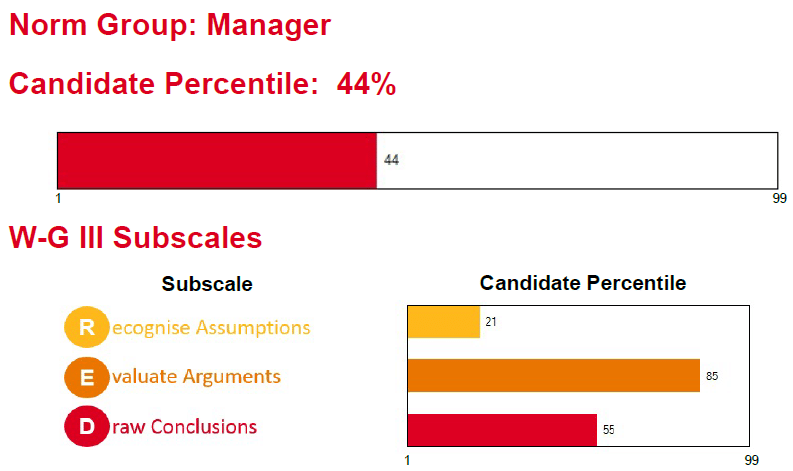
Contrary to Watson Glaser III, the WGCTA-II Profile Report also shows employers your raw scores in the three different categories, as seen below. However, this version of the test becomes less and less common, so you are not likely to encounter such a breakdown.

Watson Glaser Passing Score – by Norm Groups
Your raw score is important but it is not the deciding factor for determining whether you pass the test or not. The Watson Glaser score can be interpreted with several established norm groups – either by occupation (accountant, consultant, engineer, etc.), by position type/level (executive, manager, entry-level, etc.), or by educational background (high school, college, graduate, etc.). It is up to the recruiting company to decide which norm group to use when assessing your score. Customized norms may also be created for large organizations.
Development Report
The development report demonstrates the strengths of their employees. When given to the candidates/employees, it also guides them as to how to further explore specific skill areas and improve their skills.
Recognize Assumptions
Candidates with skilled behavior in the area will identify what is being taken for granted, and explore diverse viewpoints on the subject. Identifying the assumptions will help you reveal information gaps and enhance your understanding of the subject.
If you scored “Strength To Leverage” in this skill area, it means you possess strong skills in recognizing assumptions.

Evaluate Arguments
Candidates who can objectively and accurately evaluate arguments are likely to be hired by many organizations. Such candidates can overcome confirmation bias and also possess the capability to analyze an argument’s reasoning and supporting evidence, and explore counter-arguments even when doing so is controversial. When evaluating controversial arguments, emotions can play a negative role, as they can cloud your evaluation capabilities.
If you scored “Further Exploration” in this parameter it means that your skills are average when compared to other candidates.

Draw Conclusions
Drawing conclusions means reaching the conclusion which logically follows the evidence available for a particular problem. Furthermore, reaching a conclusion means evaluating information from diverse sources, and even changing your position on a subject when warranted by the available evidence.
If you scored “Opportunity For Development” in this parameter, it means that you are expected to improve your scores and that your skills are average when compared to other candidates.

Watson Glaser FAQs
The Watson-Glaser Critical Thinking Appraisal test measures an individual’s ability to digest information and understand situations. It is frequently administered as part of the hiring process, both for new hires and for existing employees looking to move up within their organization.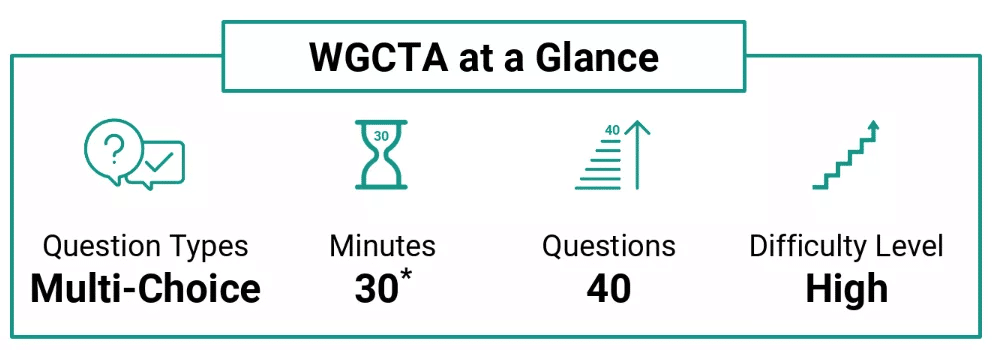
There are two current versions of the test. The Watson Glaser II Critical Thinking Appraisal (WGCTA II) forms D & E and Watson Glaser III (WG III). While both versions of the test measure the same type of skills, there are some differences.
WG III, which is the newest version, draws its questions from a large bank of items. Since every instance of the test is different, candidates can take the test without supervision. WG III is almost always timed (with an exception in the US to allow reasonable test accommodations). WG II, on the other hand, requires a proctor, and is not timed.
Watson Glaser I forms A, B, C, and S (Short) are obsolete and are no longer used in most cases.
A good score on the Watson Glaser Test is usually 75%-85%. Each company that administers the test has different standards, and may compare your score against established norm groups. For example, a score of 75% or higher will give you the best chance to be selected by a top law firm, but to become a director in a financial corporation, you are expected to score about 85%. Note that the scoring system takes into account the level of difficulty of each question—incorrectly answering easy questions or correctly answering difficult ones has higher significance on the final score.
The Watson-Glaser test is difficult, especially for individuals who aren’t familiar with the question types in the test. Familiarizing oneself with the test through practice tests will make it easier to move through the test quickly, and the tips and tricks available through most practice test companies will help you quickly answer questions.
The most important thing you can do to pass a critical thinking test is to take a practice test beforehand. The practice test will familiarize you with the type of questions you can expect to see on the test, and help you understand what the test is measuring.
The test will measure your ability to do the following:
1. Draw Inferences
2. Recognize assumptions
3. Think critically and logically interpret information
4. Draw conclusions based on given facts
5. Evaluate arguments as weak or strong
The test is divided into 5 sections:
1. Inferences: In this section, you will be provided with a list of possible inferences which you will be asked to rate as true or false.
2. Recognition of assumptions: In this section, you will encounter assumptions-based questions.
3. Deductions: You will be asked to make deductions using the information from the passage. Given a few proposed conclusions, you will be asked to decide for each if it “follows,” or “does not follow” the passage’s logic.
4. Interpreting information: In this section, you will need to interpret information from the questions to decide if each conclusion is based on the given information or not. Your answer should be based solely on the provided information and not on prior knowledge which may mislead you.
5. Analyzing arguments: To examine arguments, you will have to assess whether the provided statement is strong or weak.
There will be 40 multiple choice questions that you need to complete in only 30 minutes in the timed version.
Watson Glaser is a critical thinking test. Critical thinking is considered a crucial factor because candidates who possess this trait are often good decision-makers and arrive at informed, precise, and objective conclusions instantly. Solid decision making, problem-solving skills, and strategic thinking set the foundation for a successful candidate, organizations use these to screen and hire talented people. Companies utilize the Watson Glaser test to hire strong, dedicated employees who will go on to become future leaders. Taking Watson Glaser practice tests will help to effectively use information and make the right decision. This, in turn, will ensure passing the test.
No, yet the Watson Glaser critical thinking test is a very common recruitment phase in many leading law firms, especially in the United Kingdom, even more so for recent university graduates. If you would like to practice law at Hogan Lovells, Clifford Chance, Linklaters, CMS, or Freshfields, you will need to do well on the Watson Glaser and score at least 80%. The test is also the basis for the UK’s BCAT exam.
Yes. Watson Glaser believes that it is essential for employee assessment to analyze and make decisions under pressure, which is why the test is timed. In the timed version, you will only have 30 minutes to complete the test.
The best way to prepare for the Watson Glaser test is with the types of questions you will find on the real test. You should use a prep course, such as iPrep, that will prepare you for the critical thinking questions that appear on the Watson Glaser test, and not on general critical thinking tests, as they differ.
The best way to beat the Watson Glaser test is to prepare yourself in advance, using a similar environment to best simulate the experience. If you are taking the timed version, make sure to time yourself so you can figure out which questions you need more time to answer and which questions you can breeze through.
Many different companies and law firms use the Watson Glaser to evaluate potential employees. They include, but are not exclusive to, the following: Bank of England, BCAT, Deloitt, Dentons, Linklaters, Simmons & Simmons.
Watson Glaser Test Tips
1. Answer strictly based on the provided info
Answer each question solely based on the conditions and facts provided in the question, and not by using your own industry knowledge.
2. Read each question carefully and don’t skip paragraphs or sentences
You might encounter long questions which you may be tempted to skim through. Don’t! By quickly scanning the question, you may miss valuable information you will need to get the right answer. Read thoroughly and then make your decision.
3. Try finding logic in the statements
Answering each question in the Watson Glaser test requires finding a logical connection between the statements. Analyze the statements and try to find logic between them.
4. Learn to manage the time
Since there will be both long and short questions, the time spent on each question is difficult to assess in advance. However, through practice, you should know how to manage time without skipping any question. Learn to pace and compete with time.
5. Plan and practice
Lastly, to ace any test, precise planning and continuous practice are a must! Therefore, practice as many questions as you can beforehand.
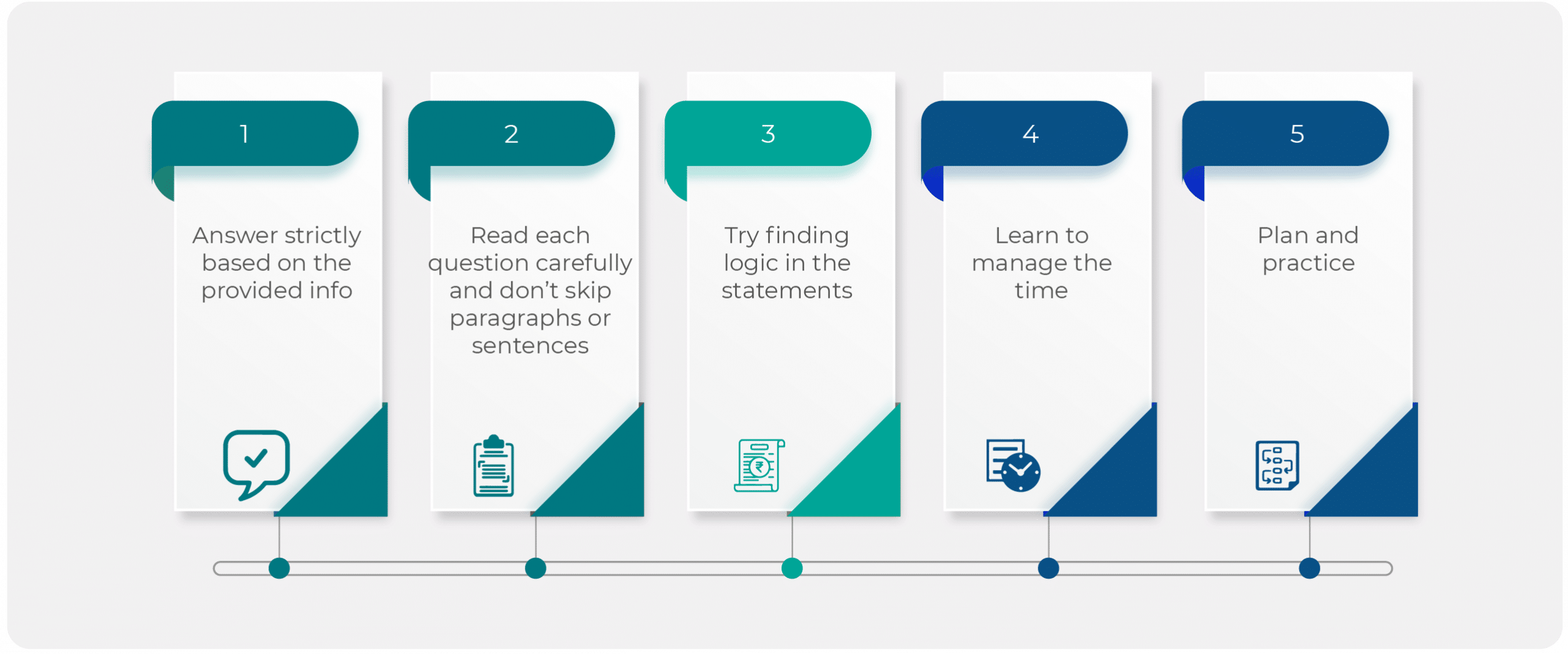
Administration
- Test Location: The Watson-Glaser test is either administered online at home by accessing a link sent to the candidate or by the hiring company, typically in their office.
- Test Schedule: The test generally takes place following at least an initial interview.
- Test Format: Multiple choice questions delivered either online (Watson Glaser II) or in pen-paper format (Watson Glaser II forms D & E only)
- Test Materials: Computer or pen & paper.
- Cost: Usually covered by the recruiting organization.
- Retake Policy: Determined by each employer.
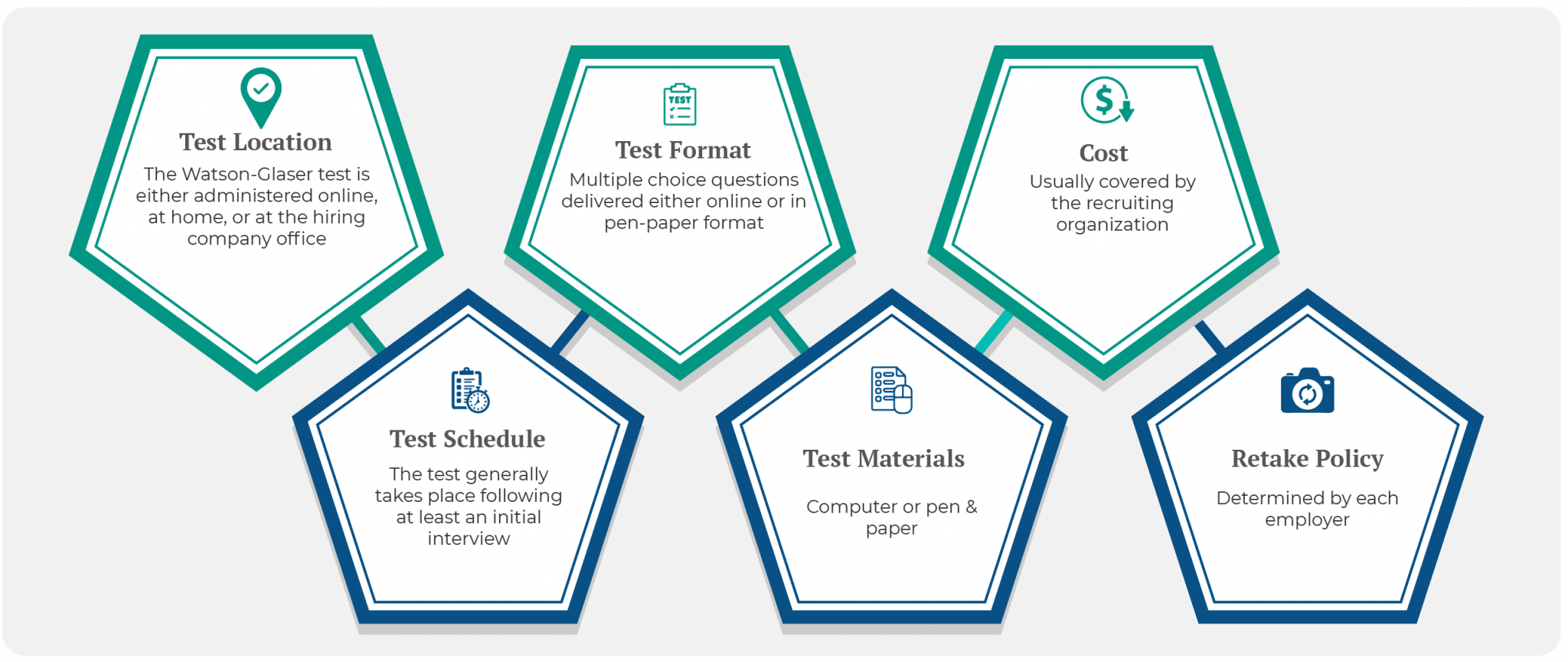
Test Provider
The Watson-Glaser test is owned and published by Pearson, one of the largest educational organizations in the world. It is part of the Pearson Talent-Lens portfolio, which focuses on pre-employment talent assessment and employee growth. The test was initially developed by Goodwin Watson and Edward Glaser.
With more than 80 years of experience in the assessment field, Pearson’s Clinical Assessment group offers innovative and comprehensive products and services. Some of the company’s brands include the Wechsler and Kaufman families of products, MMPI, BASC, OLSAT, CELF, and PLS. Pearson serves 300,000 customers in the U.S. with assessments for psychologists, speech-language, pathologists, occupational therapists, and related professionals.
Information Sources
Disclaimer – All the information and prep materials on iPrep are genuine and were created for tutoring purposes. iPrep is not affiliated with Pearson’s Clinical Assessment Group, which is the owner of the Watson-Glaser test.
Free Watson Glaser practice test: Get to know what the Watson Glaser Critical Thinking Appraisal Test (WGCTA) will be like by taking this free Watson Glaser Practice test:
Question 1 of 5
First Type – Inference
There are three general groups of countries that show the relationship between personal income and happiness levels. In some countries (such as Germany), both personal incomes and happiness levels have increased at the same rate over the past 10 years. In others (such as China), personal incomes have doubled over the past decade, but average happiness has increased by only 0.43 points. In 43 countries (including India and the US), incomes have risen, but happiness levels have declined.
Inference – The happiness level in some countries can be higher or lower than in others with the same personal income levels.
- True
- Probably True
- Insufficient Data
- Probably False
- False
The correct answer is Probably True.
Given that the relationship between personal incomes and happiness levels is shown to have three different correlations, it is probably true that countries with the same personal income levels can be correlated with both those with higher and lower happiness levels. Though one cannot infer this with complete certainty, given that the evidence does not enable such as definite inference, there is sufficient evidence here of the three different correlations between income levels and happiness to make it probably true that these correlations include the possibility given here.
Question 2 of 5
Second Type – Recognition of Assumptions
Statement: “Those companies that are especially vulnerable to high levels of cyberattacks should invest more in data security, either internally or by bringing in external experts.”
Proposed Assumption – Companies that are especially vulnerable to high levels of cyberattacks do not invest in data security.
- Assumption made
- Assumption not made
This assumption is not made.
The recommendation of the need to “invest more in data security” does not require the belief that companies do not already invest. It is just that they need to invest more.
The negative test shows that, since the negative version isn’t a problem for the statement, this is not assumed.
Companies that are especially vulnerable to high levels of cyberattack do invest in data security.
Question 3 of 5
Third Type – Deduction
Premises: If resources are used to limit future global warming, then spending on current welfare is reduced. If we reduce spending on current welfare, then people’s well-being will be lower. So, if we use current resources to limit future global warming, …
Conclusion – The risk of global warming will be reduced.
- Conclusion follows
- Conclusion does not follow
This conclusion does not follow the premises.
The structure of the premises is “If A, then B. If B, then C. So, if A…” This must lead to “…then C.”
This diagram represents a plausible organization of groups A, B, and C:
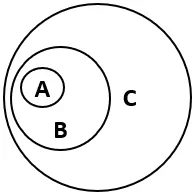
“The risk of global warming will be reduced” is not equivalent to C, being a further claim, such that it becomes D.
Question 4 of 5
Fourth Type – Interpretation
Economic forecasters tend to perform well with three-four-month predictions, but become much less successful beyond this timescale, especially with 22 months or more. The biggest errors occur ahead of economic contractions. This is because, though economies normally have steady but slow growth, when they contract, they do so sharply.
Conclusions – Not considering economic contractions risks overstating the possible growth of economies.
- Conclusion follows
- Conclusion does not follow
This conclusion follows beyond a reasonable doubt from the premises.
Given the explanations for why errors in economic forecasting are made, the evidence is sufficient for this conclusion to be drawn, since economic predictions based on the normal “steady and slow growth” of economies will be inaccurate unless contractions are taken into account. In this way, the evidence is sufficient for this conclusion to be drawn beyond a reasonable doubt.
Question 5 of 5
Fifth Type – Evaluation of Arguments
Question: Should all those aged 22-45 be required to save at least 5% of their income in a public savings plan?
No; people aged over 45 would also benefit from saving.
- Argument strong
- Argument weak
This argument is weak.
This does not give a relevant reason against the proposal as such but is more of a reason to extend it. As such, it is not an important issue for the argument itself.
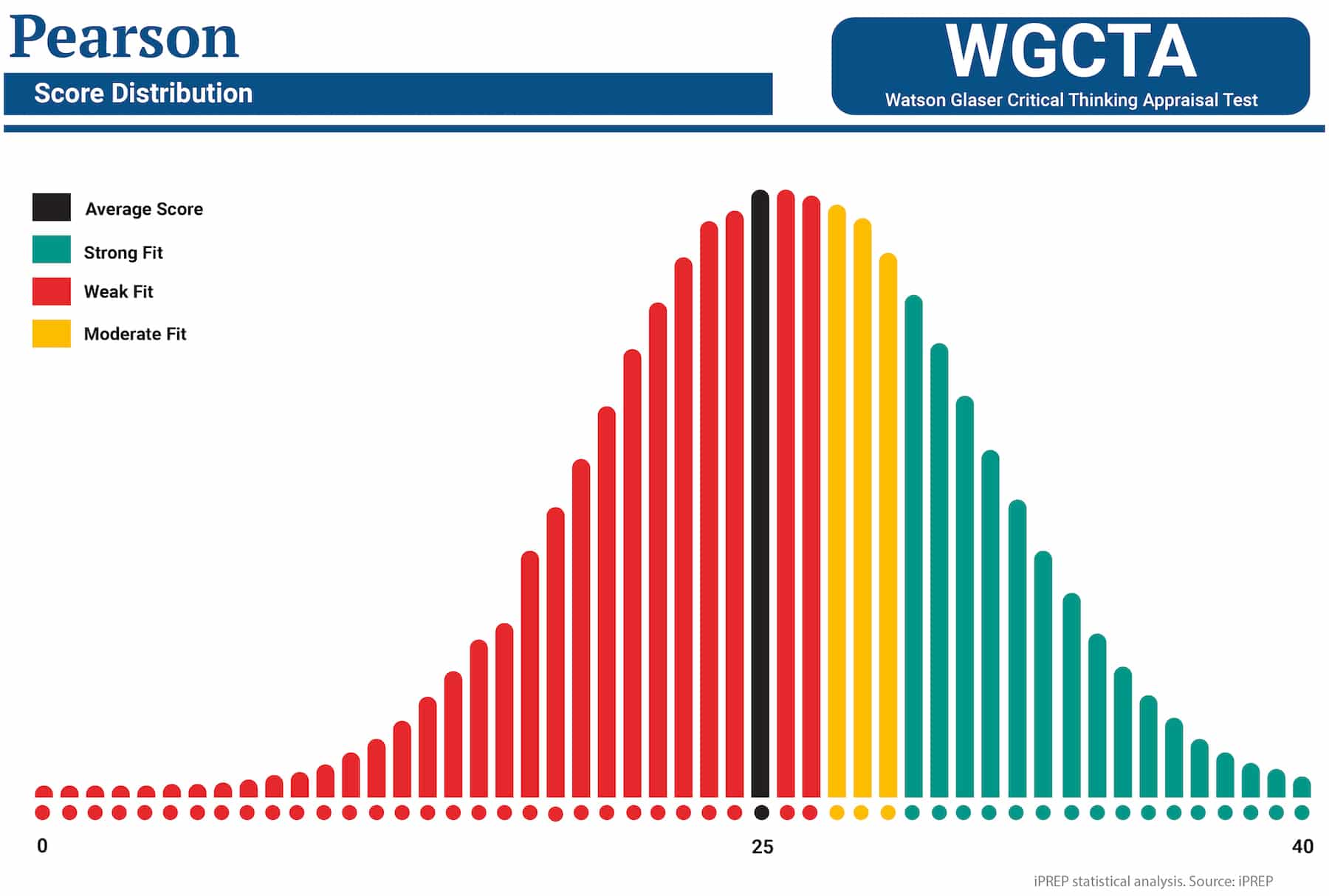
Well done!
You have completed the Sample Questions section.
The complete iPREP course includes full test simulations with detailed explanations and study guides.
‘…TESTS THAT ACTUALLY HELP’

In the first 30 minutes of use I have learned so much more than skipping along the internet looking for free content. Don’t waste you time, pay and get tests that actually help.
Richard Rodgers
January 28, 2020 at 7:49 PM
About the course
Languages: 🇺🇸 🇳🇱 🇫🇷 (beta, auto-translated)
Welcome to iPrep’s Watson Glaser Critical Thinking Appraisal (WGCTA) Course.
This course will help you boost your skills and, with it, your confidence towards your upcoming Watson Glaser test. The course will provide you with the following tools and benefits:
- You will become familiar with Watson Glaser’s five types of questions—Inference, Recognition of Assumptions, Deductions, Interpretations, and Evaluation of Arguments, get guidance per each section, and have the chance to practice test-level questions before attempting the simulations.
- You will be given full-length 40-question Watson-Glaser-style simulation tests. These simulations include similar questions to those you will encounter on the real test with the same level of difficulty. They also have the same estimated time limit as on the real test. Experiencing the test’s time pressure will ensure it will not come as a surprise on test day.
- You will be provided with a great variety of helpful tips and solving methods for the different types of questions. Some of the tips are in the guidance sections and additional ones in the detailed explanations that follow each question.
15
Learning hours
15
Practice tests
650
Questions
40
Videos
By the end of this course, you will be more knowledgeable and comfortable with the Watson Glaser Test. Knowledge and familiarity with the test are the two most significant factors that can help you maximize your score and improve your chances of success.
The course comprises two parts—guidance and test simulations. In the guidance section, we will review each type of question, its purpose, and its underlying logical mechanism. You will also have a chance to practice several test-level questions before approaching the test simulation to get a feel for the challenge ahead.
Afterwards, you will proceed to the simulation of full-length tests that accurately follow the structure and concepts of the Watson Glaser. Once done, you will be able to see full question explanations and even see how well you performed in comparison with other people who have taken the test.
Wishing you an enjoyable learning experience!
Skills you will learn
Recognition of Assumptions
Evaluation of Arguments
Drawing Conclusions
Curriculum
- Course Introduction
- Section 1: Understanding the Watson Glaser III
- Section 2: Mastering Critical Thinking Skills
- Inference
- Recognition of Assumptions
- Deduction
- Interpretation
- Evaluation of Arguments
- Section 3: Test-Taking Strategies
- Section 4: Practice Tests and Feedback
- Course Conclusion
- Appendix – Glossary of Key Terms
Customer Testimonial

I am 100% sure that working through the examples & reading the explanations provided by iPrep has improved my scores!
Mike Walter
June 12, 2019 at 12:37 PM
Reviews

Nick W****
May 23, 2025 at 1:47 PM
Very helpful. Breaks each questions down. Did find some mistakes in the answers vs questions, so I submitted error reports.

Chad M*****
November 2, 2024 at 12:34 PM
Excellent course. I highly recommend completing before taking your Watson Glaser test. The instructions and explanations are easy to follow.

Keigan P******
October 22, 2024 at 9:38 PM
this is a great resource to have in preparation for the exam. i purchased this one day before I took the exam and I got a great score after completing the full study guide. thank you iPrep!

Richard J******
October 17, 2024 at 8:42 PM
After researching the competition., I determined this is the most comprehensive course available. I highly recommend using iPrep. They're the best price too!

Ibrahim O****
September 25, 2024 at 12:17 PM
This is a very comprehensive course, it definitely helped improve my understanding of the test and my results, highly recommended.

Adithi A*******
August 14, 2024 at 11:47 AM
I think this course is harder than the actual Watson Glaser test. Hopefully, I will be able to ace the test, considering the scores I am getting in these practice tests.

Nitin B****
April 21, 2024 at 11:55 PM
The lesson plan sample questions are analyzed in great detail giving you the confidence of assessing the choices. If you follow the logic you will do well in the final test

Pritam D**
January 29, 2024 at 10:32 AM
Awesome Experience. I really like the material provided in the course. Hope it will help me acing upcoming Watson Glaser Test.

Matt C********
December 30, 2023 at 1:51 PM
Good way to get more practice. Some of the questions are not thoroughly answered, but most are. Great test to help prepare!

Aditya A******
December 11, 2023 at 6:44 PM
Very good practice resources, very useful and a lot of great content! I would really suggest this service to anyone practising Watson Glaser.
